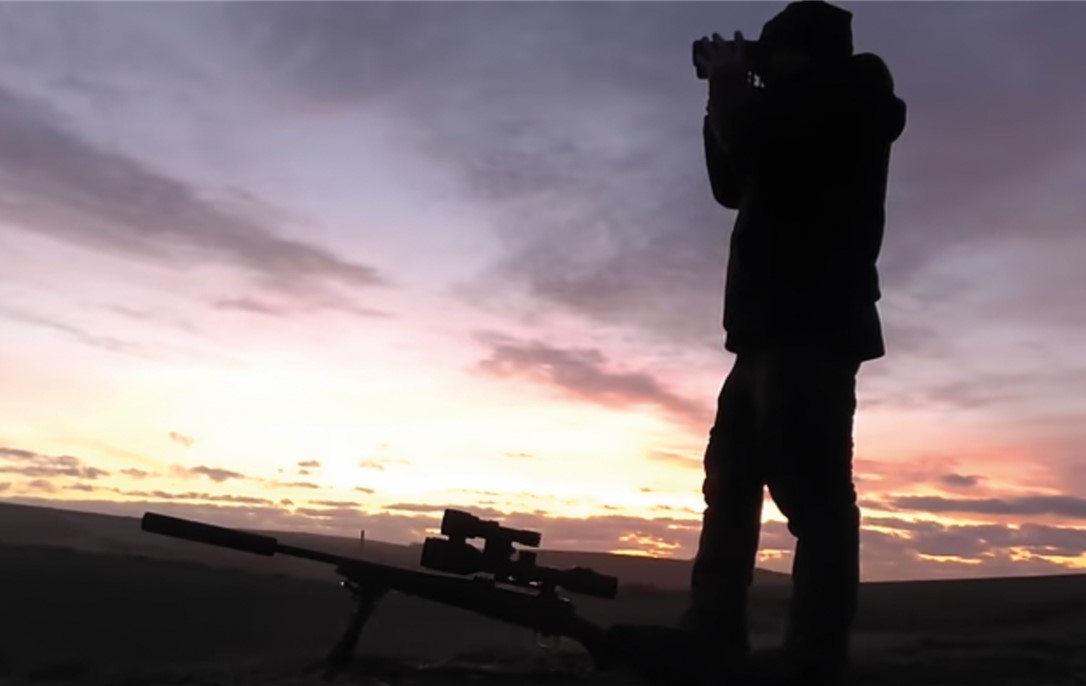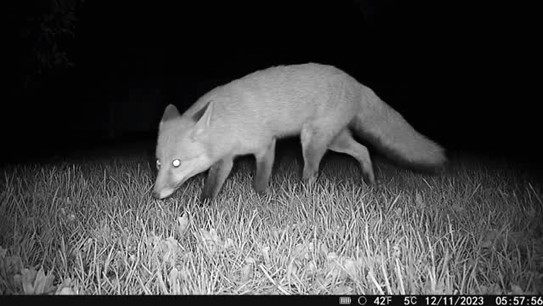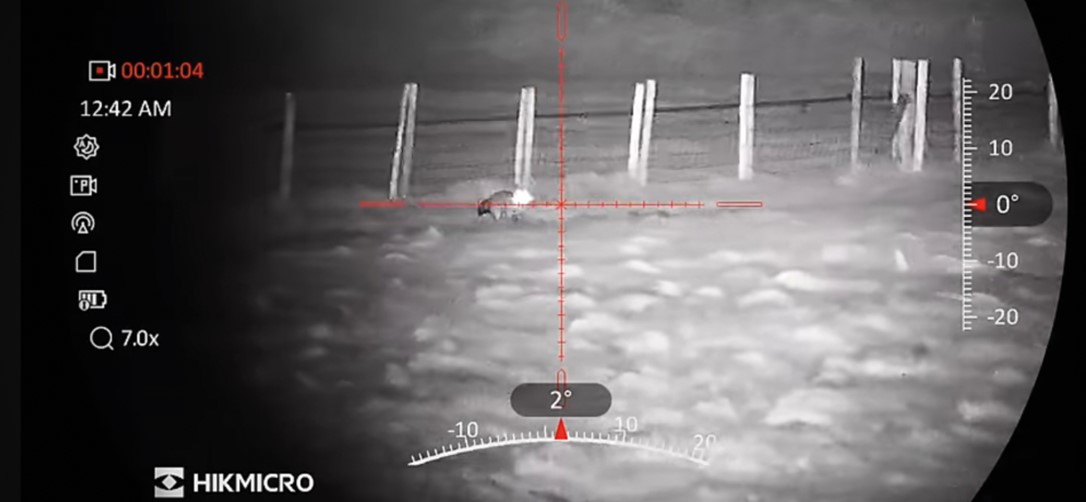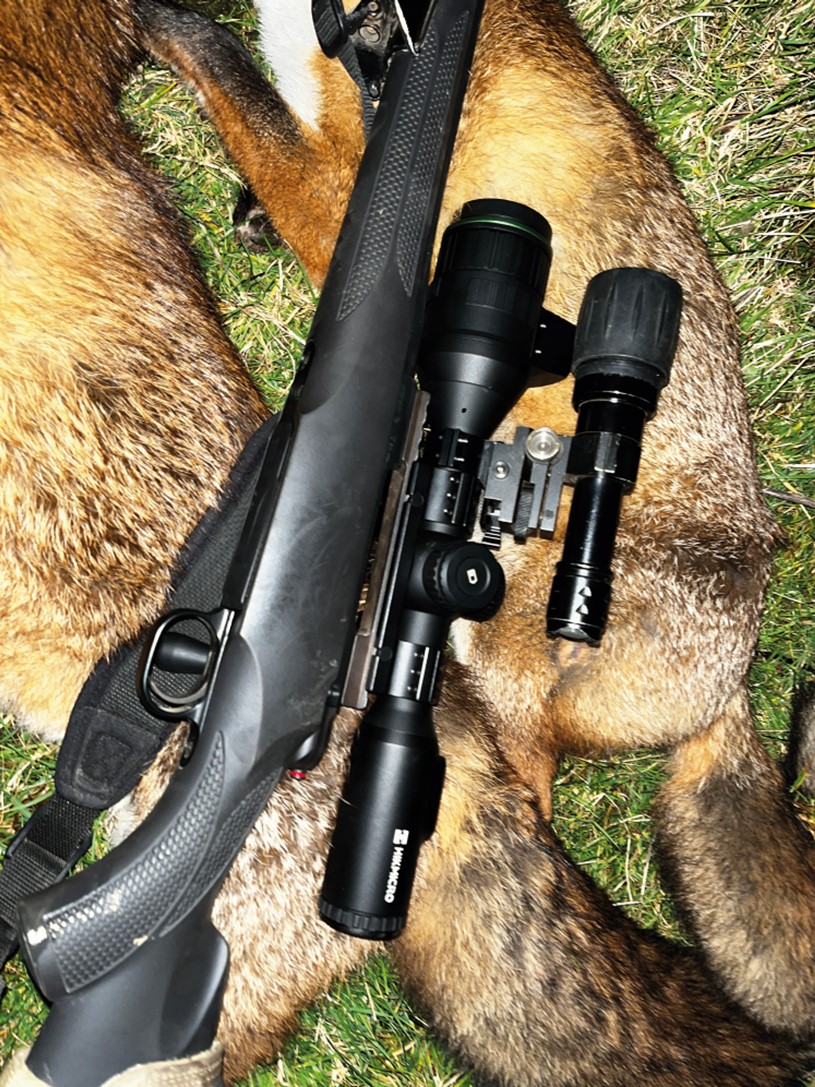With the fox mating season at an end, things tend to suddenly go rather quiet where foxes are concerned. By the start of March the vixen will have selected an earth in which to give birth to her cubs, as well as several other earths she can move them to should she feel threatened.
Once she gives birth to her cubs she will stay with them the vast majority of the time, relying on the dog fox and sometimes other relatives to bring food to the earth.
This is why there seem to be few foxes around, and then by spring you suddenly start seeing vixens out hunting and cubs appearing as the whole cycle starts again.
I like to clear as many foxes as I can early on in the year before they have cubs, and then when they have dependant young I prefer not to shoot them unless they are causing problems. Unfortunately this tends to coincide with lambing season, which seems to bring foxes in from everywhere in my area.
With this in mind I took the opportunity to get out before first light on one of the few dry mornings we’ve had this year, to a farm that will be the first to lamb. This is a very open farm with few patches of cover and steep chalky hillsides, so shots tend to be a little further than normal. I therefore took with me a rifle setup I have on test that I’ve been rather impressed with. It’s a Mauser M12 in .243 topped with the new Hikmicro Alpex 4K LRF supplied by Scott Country International.
NEW TECH
As you will probably gather, the LRF stands for ‘laser range finder’ but that’s not all this clever little day/night scope has up its sleeve. It also houses some pretty clever ballistic software. By pinging the range with a touch of a button on the eyepiece, it places a cross on your vertical crosshair highlighting how much holdover you need to allow based on the and Swarovski have been using this technology in their DS models for years. However, with the Alpex also being a night vision scope and about a quarter of the price, things start to get interesting.
Unlike the DS, the Alpex ballistic calculator isn’t really meant to be a cheat card for long range shooting, but rather a more accurate replacement for those ‘just give it a bit’ type of shots. It doesn’t have the ability to factor in environmental factors or wind, which will obviously have a marked effect on a long-range shot, but it does give you a little more confidence to stretch out further than you normally would.
For me, the only downside with this scope is it has a fairly low base mag of 3.5x, and when digitally increased the image becomes a bit grainy at the higher end of its range, which limits the scope’s potential to really reach out.
Still, on a calibre with a very looped trajectory such as a .22 LR, this 100m with 75gr Hornady ammunition, I’d already accounted for several foxes and some longer-range targets and felt confident in the setup.
 Mark is on a mission to try out the latest in LRF tech
Mark is on a mission to try out the latest in LRF tech
ACTION STATIONS
Arriving at the farm a good hour or so before first light, I gingerly negotiated the slippery muddy tracks to a steep bank that always seems popular with the local foxes, probably due to the large rabbit population through the valley. Parking just off the track on the opposite side of the valley, I made my way to a good vantage point to sit out and see what might be moving about on the other side.
I wasn’t very surprised to spot a fox near the top of the bank before I even reached my chosen vantage point. I quickly made my way the last few yards to the edge of the chalk track cut into the bank, which has a convenient little slope about 3ft high that makes a great shooting position to shoot from with the rifle rested on top.
With a quick scan round I spotted the fox a little further along the opposite bank under a small tree. Using the Alpex to ping the range, it came back as 291m – around 320yd. By the looks of the fox it was settling down, no doubt to wait for an unsuspecting rabbit to hop within striking distance. The reticle showed an aim point a little below the centre cross and with little wind to affect the shot I felt confident.
 Mark’s valley fox was blissfully unaware it was in his crosshairs
Mark’s valley fox was blissfully unaware it was in his crosshairs
By this point the fox was lying with its belly towards me but still had its head up looking round. To give myself the biggest margin for error I aimed at its neck. That way, should the bullet fly a little higher it would strike the head; lower and it would drop into the chest.
Pulling the rifle in tight to my shoulder, I took my time in aiming and slowly taking up the trigger slack as there was no need to rush. He wasn’t going anywhere soon. With a crack the rifle kicked slightly back into my shoulder and a little muzzle smoke momentarily obscured my vision – but the impact sounded promising. I couldn’t see a departing fox anywhere and a quick look through the thermal showed the fox lying lifeless in the same spot, proving just how well the scope worked.
It was just starting to get light by this point, and after another hour watching the valley I reasoned that I was unlikely to see anything else. Collecting the fox from the steep bank just below the fence line, I found my bullet had found its mark through its neck exactly where I had aimed.
 All the bells and whistles, with cant, pitch, ballistics and of course LRF
All the bells and whistles, with cant, pitch, ballistics and of course LRF
NEXT VENUE
That evening the weather was still looking dry, so I opted to head out again for another look on a different farm a little closer to home. I felt quite optimistic as I’d not been there for a few weeks and I knew there was a stack of bales that overlooked the front two fields, which were always good spots for foxes.
I figured I’d put my FoxPro caller out in the field and sit up on the bales to see what might come in. I’d not long got into position and a light rain set in – the misty sort that gets you soaked before you know it.
After around half an hour of stop-start calling, I eventually managed to entice a fox in, but rather than coming in keenly to the caller it seemed to lose interest and veer off to the right and through the hedge towards the back fields.
The rain was coming in harder now, so I sat in the truck for a while until it stopped, then headed to a smallholding that was on my way home. This bit of ground is a good one, as I can see over most of it from the main road, so I tend to just pull over and have a quick look over the fields with the thermal to see if there’s anything out there.
I immediately spotted a fox mousing around in the grass out in the open. I had to be quick, so wasted no time grabbing the rifle in its slip off the back seat. Locking the truck, I clambered over the gate by the side of the road before quietly unslipping the rifle and loading the magazine. I took another look with the thermal but couldn’t see the fox anywhere. In the middle of the field there is a small stable and I figured the fox must be out somewhere behind it.
Further up the field I have a highseat that gives a good view across the whole field and I took a quick walk to it, trying to be as quiet as possible through the muddy grass. Just as I reached the highseat I spotted the fox probably 250-300yd out on the edge of the field. I climbed up into the seat and quickly got onto the fox.
The fox wasn’t in the best of places for a shot so I tried a little mouth squeak. The fox immediately looked ound and cocked its head to the side and I knew it would come in. Another few squeaks and it was bounding in confidently.
It came in to around 170yd before stopping and sensing something. In a moment it turned and started moving away from me. I gave a squeak and then a couple of shouts before it briefly stopped for a look back. I then took the shot, dropping the vixen where she stood.
 : Job done, with two in the bag on this particular trip
: Job done, with two in the bag on this particular trip